Anish Kapoor’s sculptural practice transforms absence into an active force, rendering the void as both tactile and metaphysical. Drawing on Eastern concepts of emptiness (śūnyatā) and Western theories of the sublime, Kapoor has exploited materials from vivid pigments and wax to polished stainless steel, carved granite, and swirling black water to collapse distinctions between surface and depth. His key works, Svayambh, Void Field, Descent into Limbo, Memory, Descension, Cloud Gate, and Marsyas, invite embodied encounters with negative space, challenging viewers to confront perception itself. Beyond the gallery, Kapoor’s public commissions and material controversies (notably Vantablack) underscore the social, political, and ethical stakes of controlling absence and presence in today’s cultural landscape.
Since breaking onto the London scene in the late 1980s, Anish Kapoor has redefined sculpture by privileging space, rather than mass, as the primary medium. Rejecting Minimalism’s self-enclosed objects, he describes his work as “drawing in towards a depth that marks and makes a new surface” (Public Art Fund). By sculpting voids that appear “larger than the object that contains it,” Kapoor insists that absence can be as potent as presence in shaping meaning (Smith). His practice demands participatory viewing: one must engage with the hollows, reflections, and vertiginous apertures he creates, transforming spectators into co-creators of the sculptural event.

Kapoor’s voids resonate with a long philosophical lineage. In Western thought, Kant’s analysis of the sublime locates meaning in encounters with that which exceeds representation, while Heidegger’s ontology situates being in a play of presence and absence. Kapoor extends these threads by drawing on Buddhist emptiness (śūnyatā), in which nothingness is the generative ground of all form. In Descent into Limbo (1992), for example, a floor aperture covered by reflective black plastic produces an illusion of infinite depth, provoking the viewer’s self-awareness and metaphorically aligning the abyss within art to the abyss within the self (X-TRA). Through such works, Kapoor stages a symbiosis between the cosmos and consciousness, turning the void into a site of metaphysical reflection.
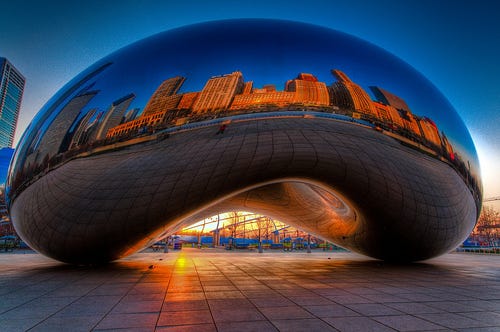

Kapoor’s choice of materials is inseparable from his metaphysical aims. His early pigment and wax “non-objects,” such as Svayambh (1990), employed red paint, wax, and Vaseline to conjure a primordial mass that alternately emerges and dissolves as the block glides through pigment pools (X-TRA). In stark contrast, his polished stainless steel works, most notably Cloud Gate (2006) in Chicago’s Millennium Park, achieve mirror-smooth surfaces that collapse boundaries between object, environment, and spectator as reflections warp and enfold onlookers (“Cloud Gate”). Kapoor’s stone interventions, such as Void Field (1990), feature massive Brazilian granite blocks each bearing a perfect concave cavity, dramatizing the tension between geological weight and primordial emptiness (Museo Reina Sofía). His water-based installation Descension (2014) further extends this exploration by circulating dyed black water in a continuously rotating whirlpool, materializing the void as a living, unpredictable element (Public Art Fund; Architectural Digest). Finally, in Memory (2008), a 24-ton Cor-Ten steel ovoid pierced by a minute portal negates all light, compelling viewers to confront a sealed darkness that resonates with Eastern meditation on emptiness (Guggenheim).
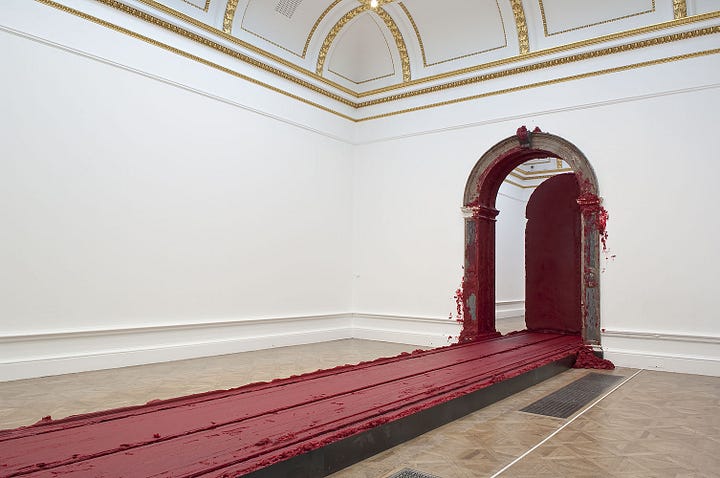


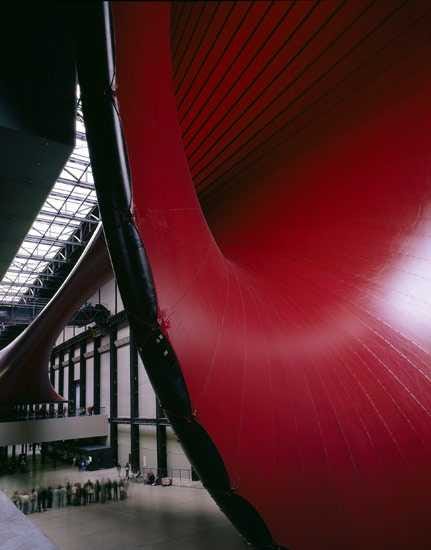
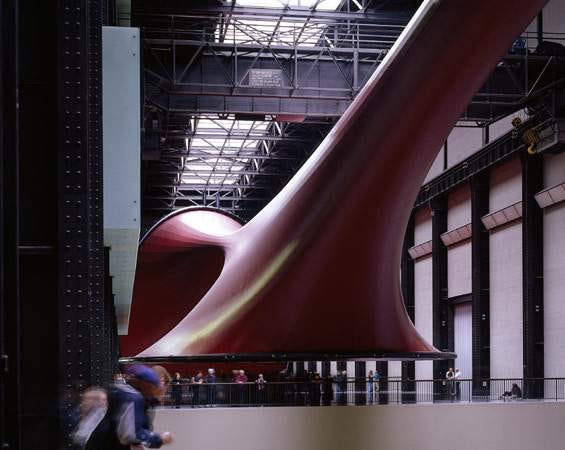
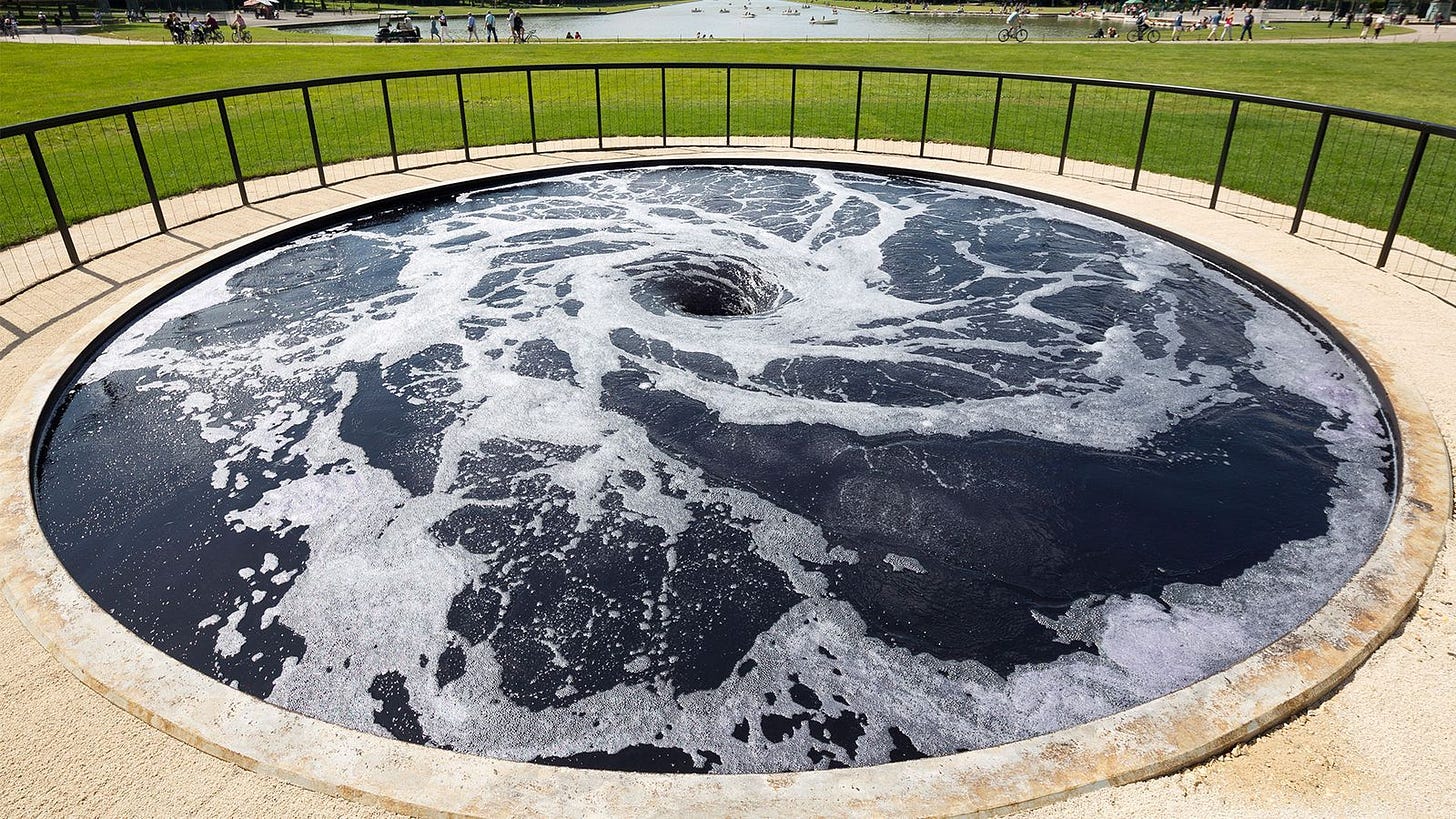
In Svayambh, a ten-ton wax and pigment block silently traverses submerged rails, leaving a vivid red trail that simultaneously constructs and erodes form, embodying Kapoor’s description of the void as an ever-renewing space (X-TRA). Void Field’s nineteen polished granite blocks arrayed on the floor each harbor an elliptical hollow so deep it seems to invite the viewer’s gaze into another dimension, making the negative space as psychologically potent as the stone’s heft (Museo Reina Sofía). Descent into Limbo transforms the gallery floor into an abyssal plane, its reflective membrane conjuring an illusion of infinite void that elicits vertigo and self-reflection (X-TRA). In Cloud Gate, Kapoor’s monumental stainless steel “bean” reflects Chicago’s skyline and pedestrians in warped panoramas, democratizing engagement by embedding viewers within the sculpture’s void-like surface (“Cloud Gate”). The Tate Modern’s Marsyas (2003) introduced an epic scale and chromatic intensity to the Turbine Hall, comprising three steel rings spanned by a red PVC membrane that flooded the industrial space, invoking the body’s confrontation with vast emptiness (Tate Modern). Meanwhile, Descension’s swirling black whirlpool at Brooklyn Bridge Park continues Kapoor’s interrogation of material predictability, turning benign water into an unsettling abyss that defies control (Public Art Fund; Architectural Digest).
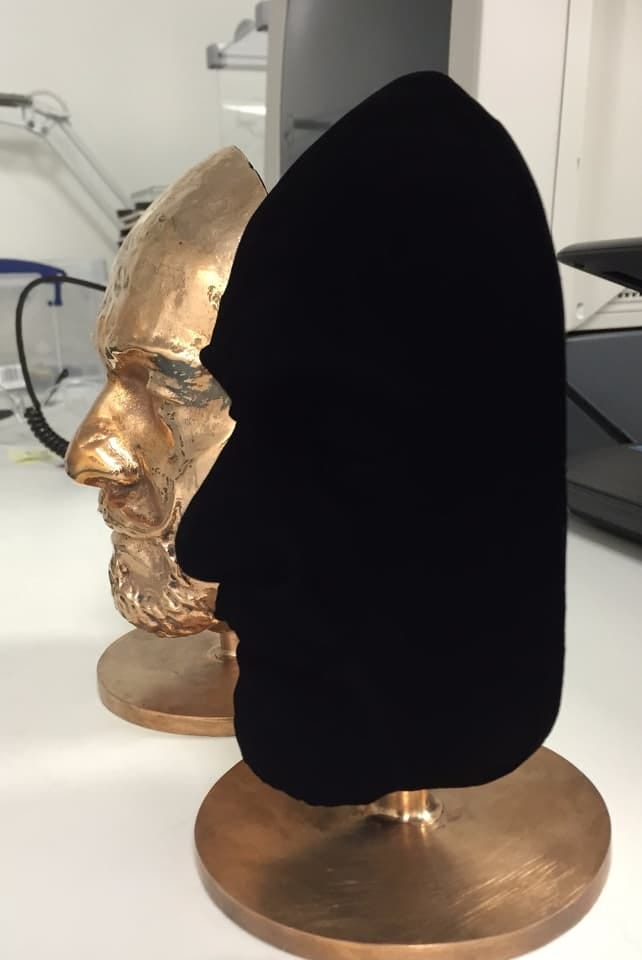
Kapoor’s metaphysical quest led him to license Vantablack S-VIS in 2016, a carbon-nanotube coating absorbing 99.96% of visible light, which he used to deepen sculptural voids. This exclusivity provoked widespread backlash among artists, who viewed the hoarded material as antithetical to art’s communal ethos (WIRED). Stuart Semple’s creation of “Pinkest Pink” and subsequent “Black 2.0” directly challenged Kapoor’s monopoly, turning the Vantablack dispute into a public debate over artistic freedom, intellectual property, and the ethics of material ownership (NPR; WIRED).
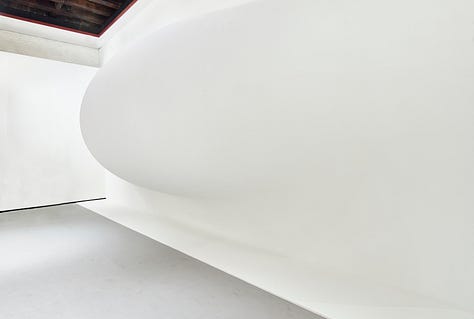

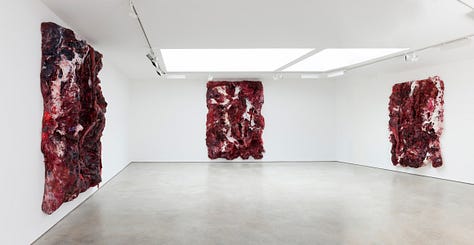
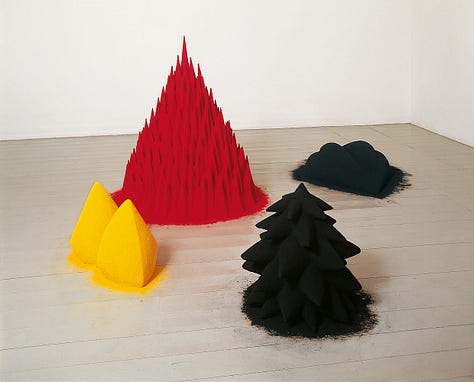
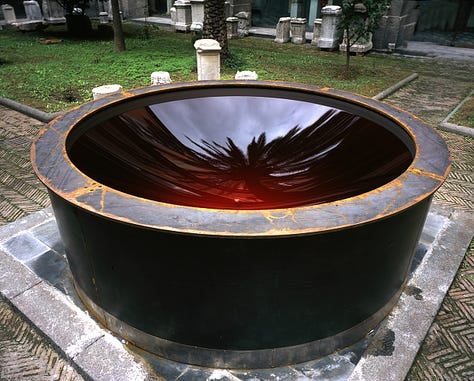
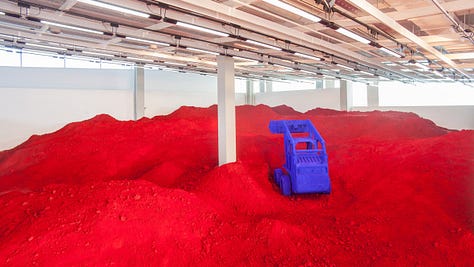
Kapoor’s sculptures extend far beyond galleries into civic life. Cloud Gate has become an iconic Chicago landmark, its reflective surface fostering communal interaction and collective identity (AFAR). His foundation in Palazzo Priuli Manfrin, Venice, transformed a Renaissance palazzo into a public art space in 2022, illustrating his commitment to cultural stewardship even amid bureaucratic and pandemic-era delays (The New Yorker). The epic Marsyas reimagined Tate Modern’s Turbine Hall, demonstrating Kapoor’s capacity to convert industrial venues into immersive environments that engage millions of visitors (Tate Modern).
Anish Kapoor’s pioneering focus on the void, realized through a spectrum of materials and ambitious installations, repositions sculpture as a philosophy of absence, where nothingness becomes a site of profound inquiry. By making the unseen as palpable as the seen, Kapoor challenges viewers to confront the limits of perception, the politics of visibility, and the power dynamics embedded in control over absence. His work reminds us that true engagement with art, and with reality, demands an embrace of the void’s unsettling generosity.
References:
Anish Kapoor: Descension. Public Art Fund, publicartfund.org/exhibitions/view/anish-kapoor-descension/. Accessed 6 Feb. 2025.(Public Art Fund)
Cloud Gate. Anish Kapoor Official Site, anishkapoor.com/110/cloud-gate-2. Accessed 6 Feb. 2025. (Anish Kapoor)
Descension. Architectural Digest, www.architecturaldigest.com/story/anish-kapoor-explains-latest-installation-endless-whirlpool. Accessed 6 Feb. 2025.(Architectural Digest)
Marsyas: The Unilever Series. Tate Modern, www.tate.org.uk/whats-on/tate-modern/unilever-series/unilever-series-anish-kapoor-marsyas. Accessed 6 Feb. 2025.(Tate)
Memory. Solomon R. Guggenheim Museum, www.guggenheim.org/exhibition/anish-kapoor-memory. Accessed 6 Feb. 2025.(The Guggenheim Museums and Foundation)
Svayambh. X-TRA, x-traonline.org/article/anish-kapoors-svayambh. Accessed 6 Feb. 2025. (X-TRA Online)
Void Field. Museo Reina Sofía, www.museoreinasofia.es/en/collection/artwork/void-field. Accessed 6 Feb. 2025. (Museo Reina Sofía)
Why Scientists and Artists Want The Blackest Substances on Earth. WIRED, www.wired.com/story/vantablack-anish-kapoor-stuart-semple. Accessed 6 Feb. 2025.(WIRED)
Some Artists Are Seeing Red Over A New Black. NPR, 3 Mar. 2016, www.npr.org/sections/thetwo-way/2016/03/03/469082803/some-artists-are-seeing-red-over-a-new-black. Accessed 6 Feb. 2025.(NPR)
Anish Kapoor. Wikipedia, 2 May 2025, en.wikipedia.org/wiki/Anish_Kapoor. Accessed 6 Feb. 2025. (Wikipedia)
Cloud Gate Review. AFAR, www.afar.com/places/cloud-gate-chicago. Accessed 6 Feb. 2025.(NPR)
Anish Kapoor’s Material Values. The New Yorker, 22 Aug. 2022, www.newyorker.com/magazine/2022/08/22/anish-kapoors-material-values. Accessed 6 Feb. 2025.(newyorker.com)




He is an incredible artist. Thank you for this in depth article !
When you work like this it shows. Ever pushing, ever changing the dialogue between humans and space; space and void. Once we’d not have known the difference. Kapoor changed all that.